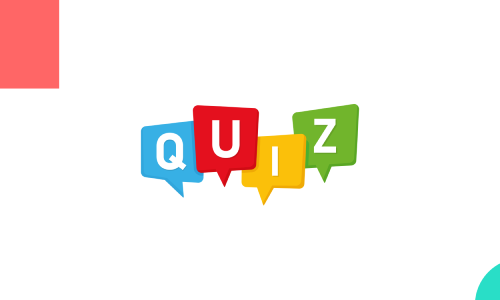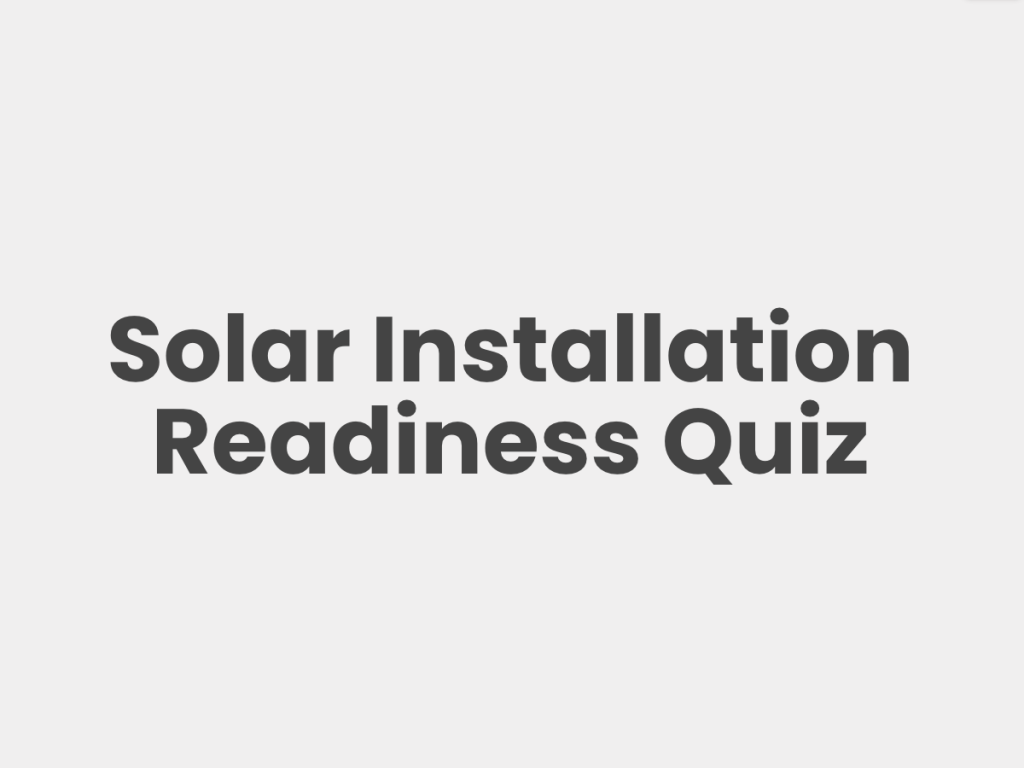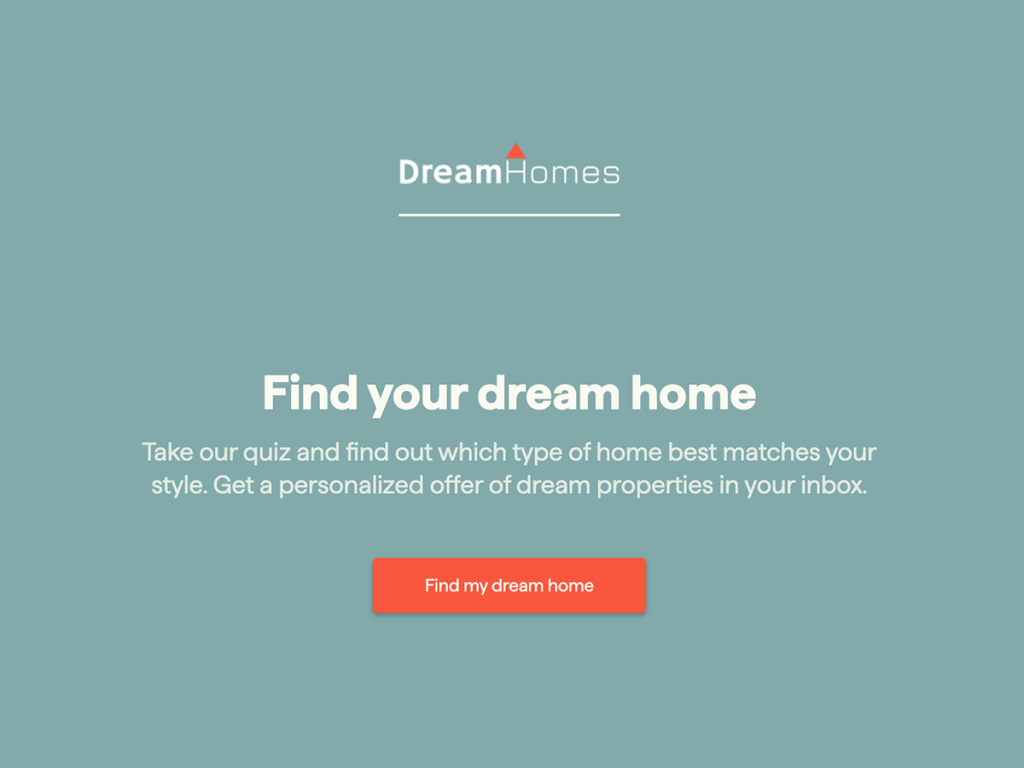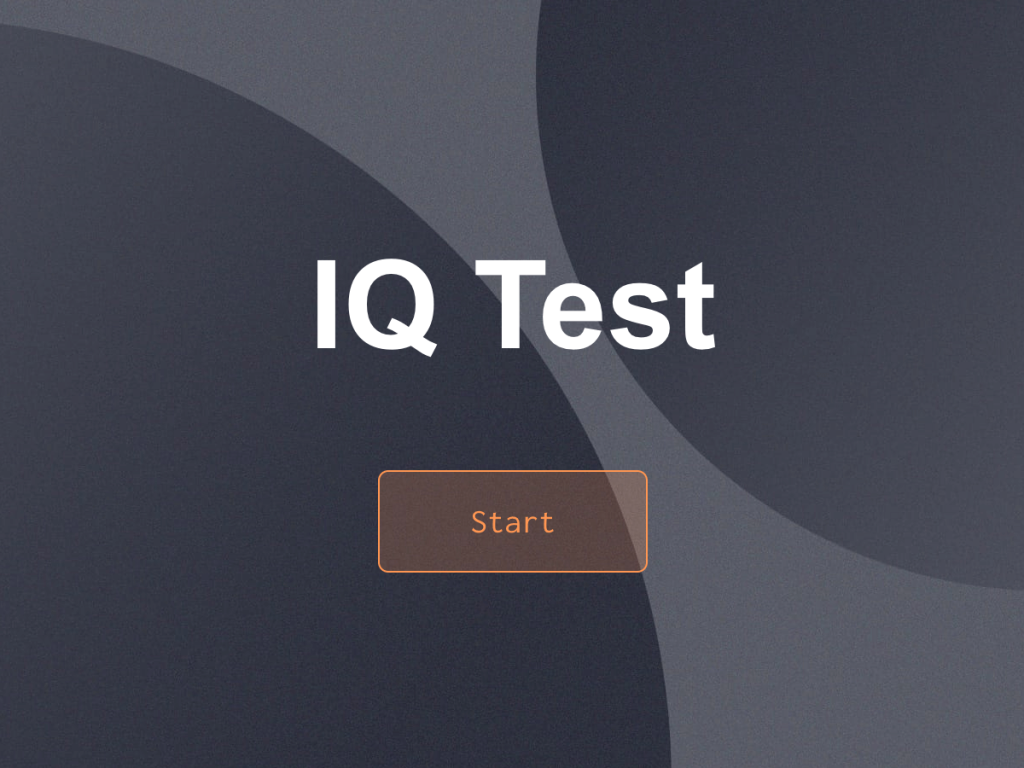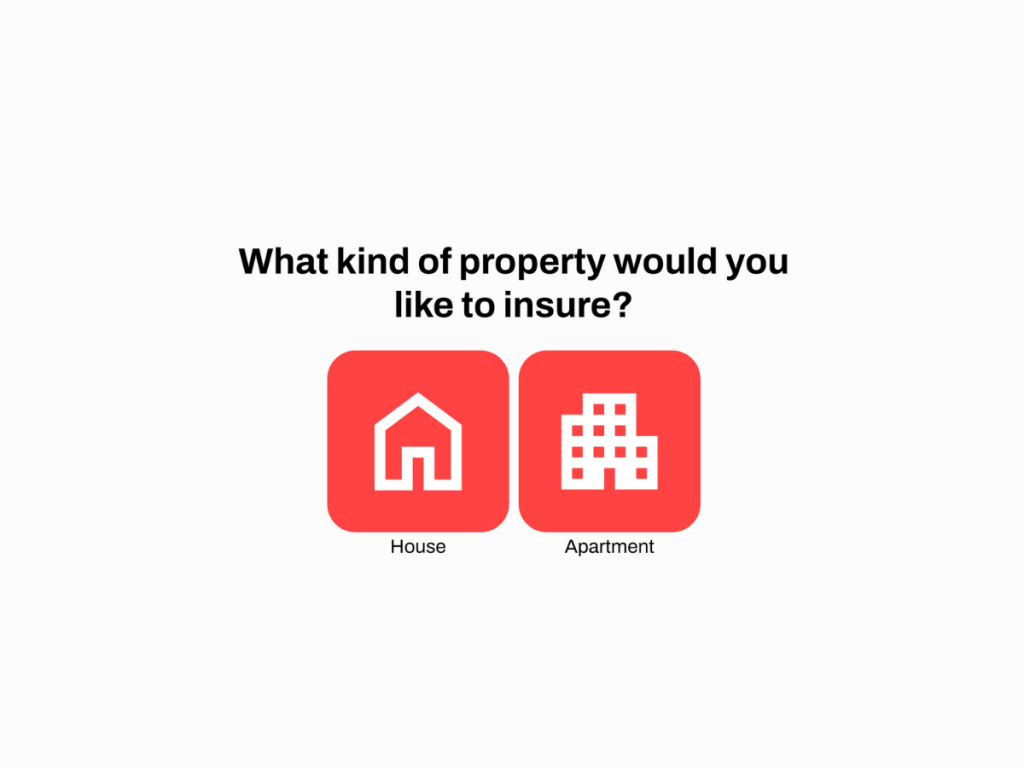If you've been running lead generation quizzes on your website, you may have noticed that not everyone finishes them. This can be frustrating, especially if you're putting a lot of effort into creating and promoting your quizzes.
We know that interactive content (like quizzes) grabs attention better when compared to static content. But that doesn't mean every quiz is created equal.
When a quiz is done right, it can be a fantastic way to lower lead costs, get people into your CRM to build a relationship with, and ultimately drive more sales to your products or services.
In this article, we will discuss the 7 main reasons why people aren't completing your quiz and what you can do to plug those holes in the best way possible. In each section you'll find the problem and possible solutions to it.
Let's get started!
7 Issues That Reduce Your Quiz Completion Rates
1. Too Few or Too Many Questions
The whole point of quiz questions is to diagnose and better understand the person taking the quiz's situation. If you ask too few questions, the person taking the quiz will feel as though they haven't provided enough information for the results to be meaningful. On the other hand, if you ask too many, they may begin to feel like you're being invasive, or they'll lose interest.
In general, the sweet spot for the number of questions you should have in your quiz is 5-12. After making hundreds (if not thousands) of quizzes, this is what Ryan Levesque, creator of the Ask Method, recommends. It's enough questions to make the person feel heard, seen, and understood, but not too many where they'll get frustrated and leave.
If you have below 5 questions or above 12 in your quiz, this could be a major reason people aren't finishing your quiz.
2. Poor-Quality Questions
It could also be the quality of your questions that needs improvement.
Questions that are too broad, vague, or simply don't make sense can cause people to feel confused, frustrated, and/or overwhelmed. This increases the odds of them wanting to leave the quiz.
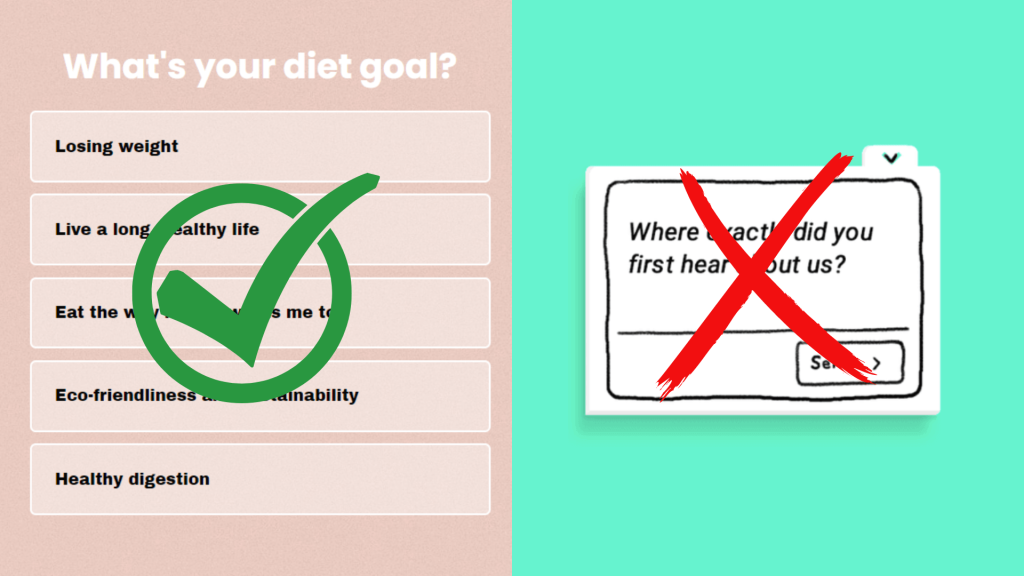
It's crucial that your questions are clear, concise, and easy to understand. The person taking the quiz should be able to read your question once and know what you're asking. If they need to reread questions multiple times to understand what you're asking, you've lost them.
In addition to being clear and easy to understand, it's important that your questions be relevant. You never want the person to say in their head, "why does this matter?". For example, if you have a dog behavior quiz, asking a question about the quiz taker's income will seem irrelevant.
While knowing your quiz taker's income is valuable so you can understand if they can afford your product or services, it's seemingly irrelevant to the quiz. It's also something people are more hesitant to share about themselves. This brings me to the next type of question to avoid.
If you ask questions that are too personal, this will be off-putting to many and cause them to leave the quiz unfinished. Generally, anything you wouldn't ask someone when first meeting them is likely too personal for a quiz. For example, a quiz around investing can ask how often the person makes trades, but asking how much profit they made last year is a little too personal.
Lastly, you want to make sure you’re using close-ended questions and not open-ended questions. Close-ended questions provide very matter-of-fact answers. For example, how old are you? If you provide >20, 21-36, 37-50, 51+ as possible answers, this is easy and requires little thought for the person to answer.
Whereas open-ended questions are more opinionated and thought-provoking. They have value in getting to know your potential clients/customers better. But they should be saved for later on in your follow-up after they’ve completed your quiz.
The quality of your questions is crucial to ensure people happily answer each question. You want them to be clear, concise, easily understandable, relevant, and not too personal.
3. Poor Navigation
If the navigation of your quiz isn't fluid and easy to progress through, this can be a significant deterrent for people. They need to easily understand where they are in the quiz, what questions have been answered, and roughly how many more there are left.
If people feel stuck in a cycle of continually scrolling and clicking, they may quit the quiz altogether. Make sure you have a clear set of navigational buttons that let people quickly jump to the next question or backtrack if they need to.
How to Do It Right? (using involve.me of Course ;))
A progress bar is a great way to keep a person informed on how much of the quiz they've completed so far. This shows them every step of the way how close they are to finishing the quiz.
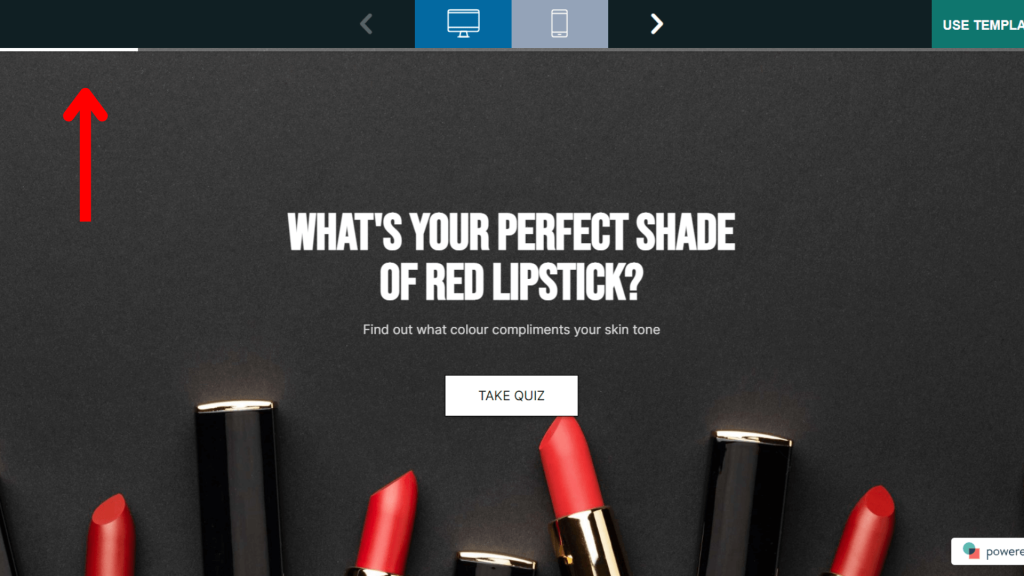
Try out one of our dozens of quiz templates to see how seamless progression through an involve.me quiz is.
4. A First Question Which Is Too Challenging
The first question of a quiz is sometimes called the "grease the wheels" question. Which simply means it gets the person moving forward quickly and easily.
If the first question is too challenging or complicated, this will cause people to leave your quiz without ever giving it a chance. Therefore, you want the first question to be a straightforward, non-threatening question. Making it easy to answer creates momentum and gives your quiz a better chance of completion.
Generally, a good first quiz question is binary. The only options they have are A or B. And, it should be obvious to the quiz taker which category they fit into. Such as in the image below.
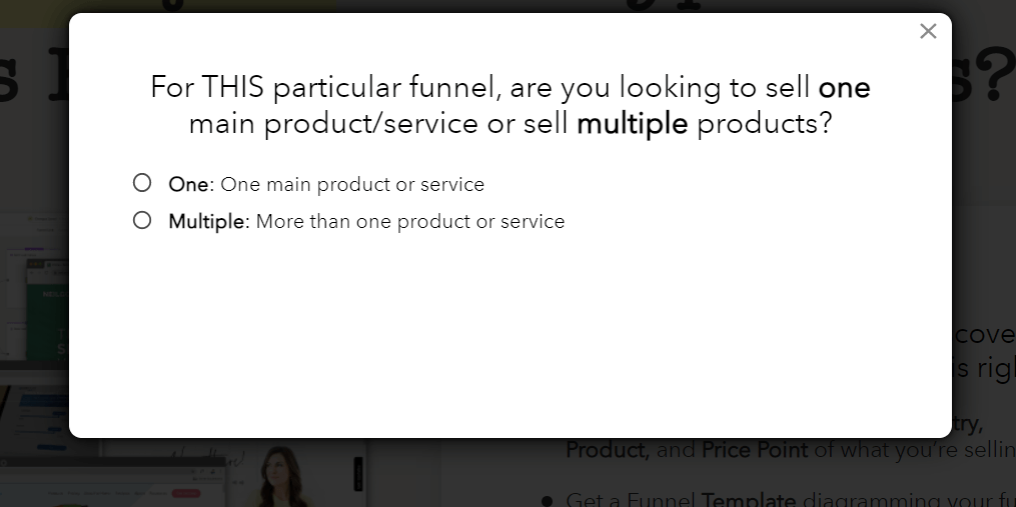
Another example, going back to the dog behavior quiz example, would be asking whether their dog is a puppy (under 8 months) or an adult (over 8 months). This is a very simple, relevant, and easy-to-self-categorize question. Their dog is either under or over the age of 8 months, and it makes sense why you would ask this question.
Making the first question a no-brainer type of question, one that requires little thinking to answer, is the best way to create momentum. Once they've started, they are much more likely to finish. In fact, once started, quizzes average a 90% completion rate.
5. One Question Per Screen
Quizzes with multiple questions on one page appear like a lot more work. If you see 12 questions on one page, it looks like a lot of effort and increases the chances of people leaving without finishing your quiz. The best quizzes have one question per screen.
It creates micro-commitments and makes the quiz taker feel like they're making good progress. Thankfully, involve.me takes care of this completely. Each question you add will automatically be created as a separate "page" in the quiz.
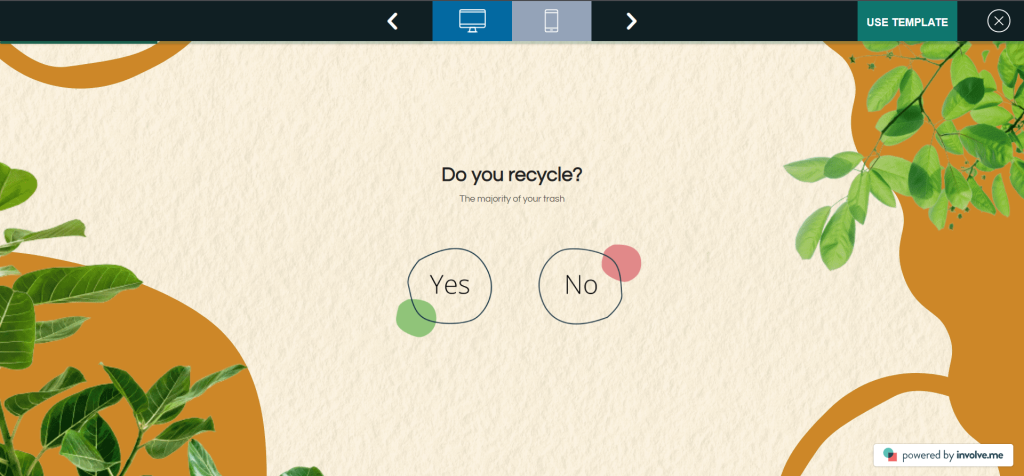
When they answer one question, immediately, the next question pulls up on their screen. This encourages engagement because they can quickly see the progress they're making. It also requires minimal effort on their end, which is precisely how you want your quiz to feel. Effortless.
6. Not Using Easy Answer Types
Multiple choice questions are the most popular way to deliver a quiz because they are easy for people to answer quickly. Other types of questions, such as those where you're asking them to provide a written response, are not ideal. They require quiz takers to think more about their answers and provide detailed information, which can be overwhelming and uninteresting for some.
Multiple choice questions are the best way to go because they are easier for people to answer. They can quickly scan the options and select the one that resonates with them the most. This aligns with the effortless theme you want your quiz to have. The more heavy lifting you can do for your quiz taker, the better.
Another way to make answering your quiz questions easier is to use images instead of words. Did you know that people are able to process images 60,000 times faster than ordinary text? Because of this, allowing people to click on images instead of written answers can help people finish your quiz even faster. It adds variability to your quiz and can make answering a multiple choice question even easier.
The sweet spot for the number of answers for a multiple choice question is 3-5. Not too many where it becomes hard to pick just one or is simply overwhelming, and not too few where there's no option a person can identify with.
7. Your Offer Isn't Compelling Enough
The final reason people may not be finishing your quiz is that they don't find the offer at the end compelling enough to give up their contact information. If you're not giving the quiz taker something they value for completing it, there's not enough incentive for them to complete it.
Ensure your results/offer has enough perceived value worth providing access to their email address. If you notice people are answering all the questions but not completing it by submitting their email, your quiz results may not be enticing enough.
Your quiz results should promise to satiate their curiosity or provide an answer to a problem. Personality quizzes work so well because you're interested in learning your personality type after answering all the questions. There's adequate self-discovery at the end to entice a person into sharing their email with you to get their results.
If the quiz results are something a person can easily live without or not something they're terribly curious about, they're much less likely to provide their email.
Final Thoughts
If you're noticing many people are not finishing your quiz, it's likely you have one of the above issues present. The good news is that they are all fixable.
It's crucial to ensure your quiz looks attractive and is effortless for people to complete. Best practices are to keep the number of questions between 5-12 and the number of possible answers between 3-5. Of course, there are always exceptions, but generally, these ranges give your quiz the best chance of success.
And possibly most important, make sure your offer is worthy of your audiences' contact information. Once you have these elements in place, you should start seeing an increase in the number of people finishing your quiz. Good luck!

